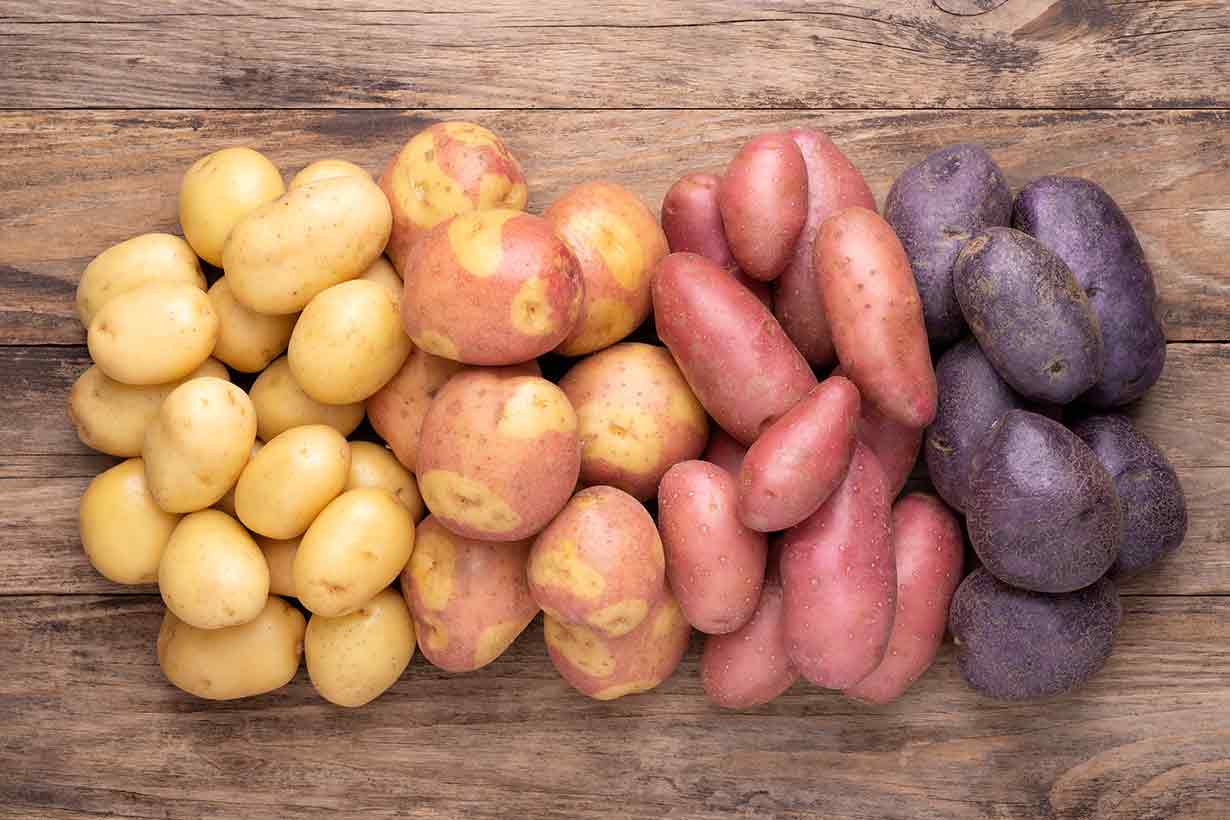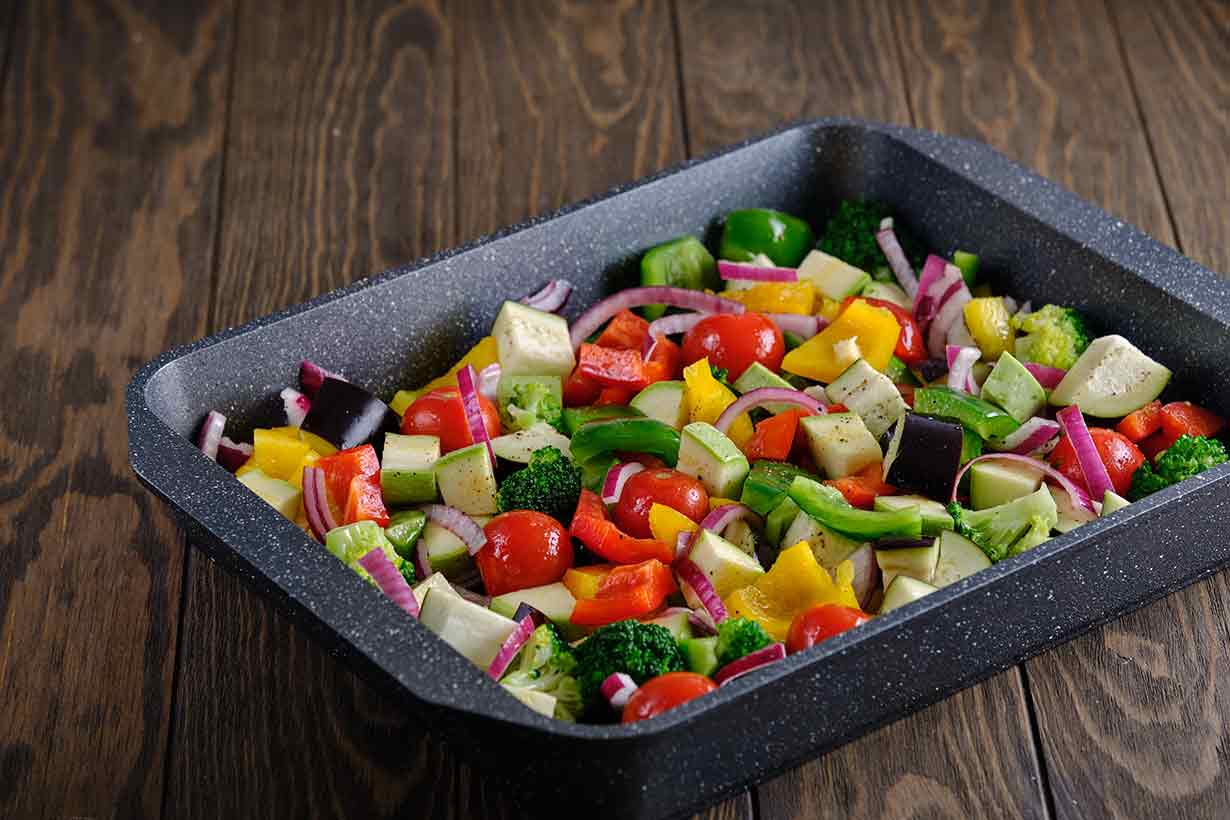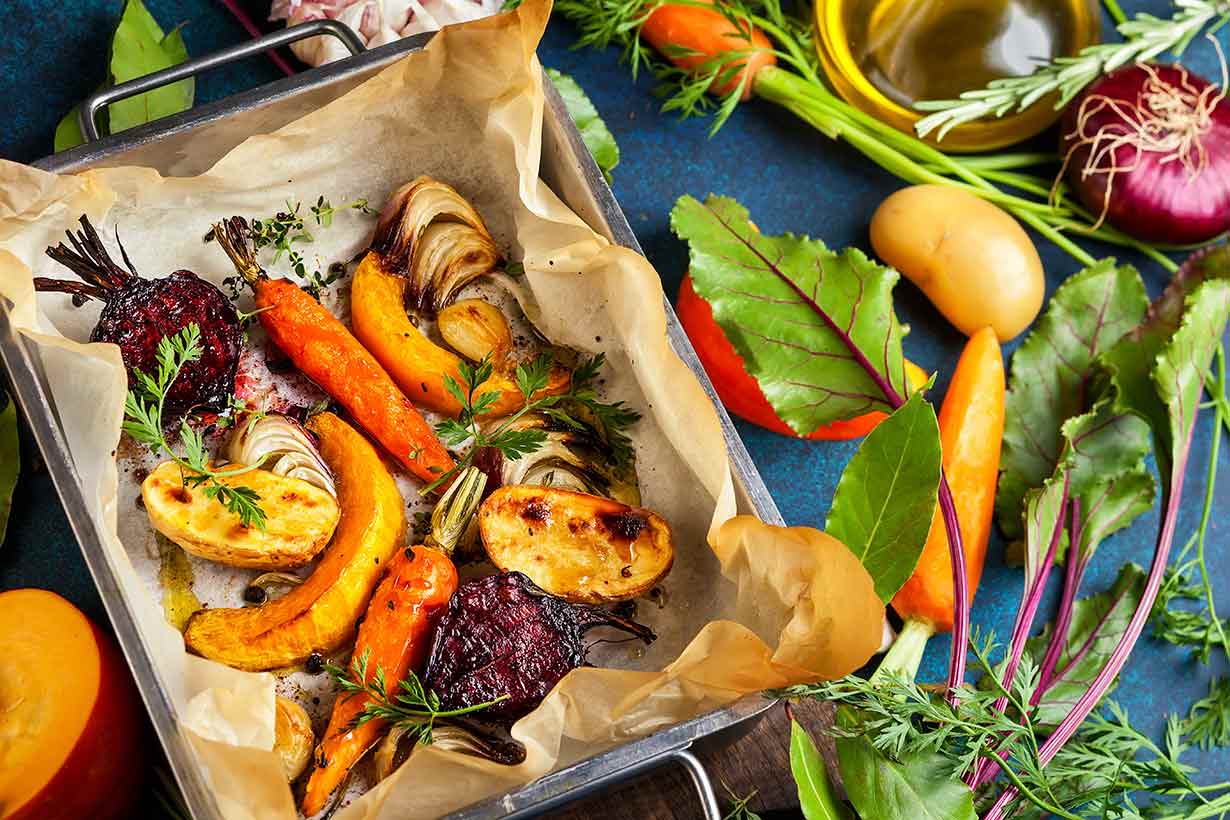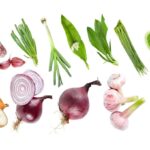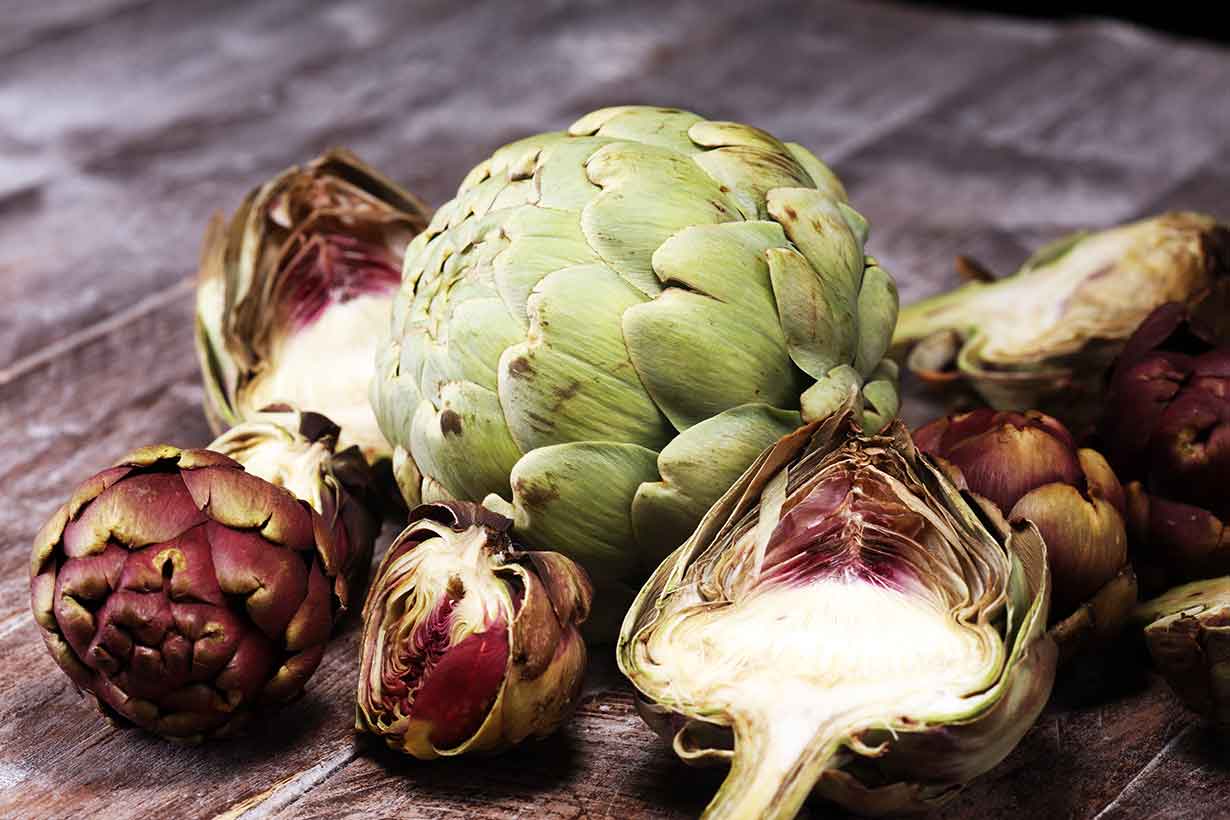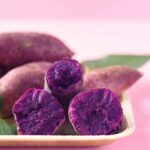Many kinds of fruits and vegetables are available for purchase in frozen form.
However, a key question many people have is whether or not there is a nutritional difference between the two.
In short: yes, there are some nutritional differences.
This article examines these differences, whether they are meaningful, and whether fresh or frozen produce is the better choice.
Table of contents
- Benefits and Downsides of Fresh and Frozen Fruit and Vegetables
- Nutritional Differences Between Fresh and Frozen Fruit and Vegetables
- Interesting Fact: Frozen Fruit and Vegetable Consumers Have Higher Total Fruit and Vegetable Intakes
- Why Do Some People Believe Frozen Produce Is Inferior?
- Fresh vs. Frozen Fruits and Vegetables: Which Is the Better Option?
Benefits and Downsides of Fresh and Frozen Fruit and Vegetables

Before we look into the nutritional differences between fresh and frozen produce, let’s first examine each option’s general benefits and downsides. Why would people want to buy fresh over frozen and vice-versa?
General Benefits of Fresh Produce Over Frozen
Here are some benefits that fresh fruit and vegetables have over frozen options:
- Some frozen produce (such as berries) requires thawing before consumption, which is not an issue with fresh produce.
- Most people prefer the taste of fresh fruit and vegetables.
- Fresh produce (such as carrots) can be eaten raw, whereas frozen vegetables are often precooked prior to the freezing process (1).
- It is generally easier to pan-fry and roast fresh vegetables.
General Benefits of Frozen Produce
Here are some benefits that fresh fruit and vegetables have over frozen options:
- Whereas fresh vegetables have a short time to be consumed, frozen vegetables don’t need to be eaten quickly and can stay in the freezer.
- It is possible to buy some fruit and vegetables that are out of season in their frozen form.
- Frozen vegetables can be cooked directly from the bag and don’t need extra preparation (such as washing and peeling).
- It is not always the case, but frozen fruit and vegetables are often more affordable than their fresh counterparts.
Nutritional Differences Between Fresh and Frozen Fruit and Vegetables
This section will review the available scientific literature on nutritional differences between fresh and frozen produce.
Based on a literature search, some studies analyzed the nutritional differences between the following fresh and frozen fruit and vegetables:
- Apricots
- Asparagus
- Blueberries
- Blackberries
- Broccoli
- Carrots
- Cauliflower
- Cherries
- Corn
- Green beans
- Peaches
- Peas
- Raspberries
- Spinach
- Strawberries
- Yellow beans
- Turnip greens
Let’s now look at what these differences were for each specific fruit and vegetable.
Apricots
A 2018 study looked at the impact of freezing on the nutritional content of apricots. The findings of this study were as follows (2):
- Frozen apricots had an increased content of antioxidants (529%), beta-carotene (35%), vitamin C (3370%), and polyphenols (406%) compared to fresh apricots.
- After three months of storage, the content of vitamin C and polyphenols in frozen apricots fell but remained higher than in fresh apricots.
- Frozen apricots’ substantial vitamin C content may have been due to the freezing process using ascorbic acid (vitamin C) solution as a preservative.
Asparagus
A 2014 study examined the nutritional content of ten fruit and vegetables, including asparagus, for their provision of 29 vitamins and minerals when fresh and frozen based on data from the USDA database (3).
Once the nutritional content was known, a score was assigned based on the total vitamin and mineral content per calorie.
Based on this standardization, asparagus scored as follows:
- 0.075 per calorie for frozen asparagus
- 0.084 per calorie for fresh asparagus
These figures suggest that fresh asparagus has a slightly greater nutrient content per calorie (by approximately 12%).
Blackberries
Blackberries achieved the following standardized scores for vitamin and mineral content per calorie (3):
- 0.023 per calorie for frozen blackberries
- 0.031 per calorie for fresh blackberries
This shows that fresh blackberries’ vitamin and mineral content was slightly higher than frozen blackberries.
Blueberries
Standardized vitamin and mineral content scores were given to blueberries as follows (3):
- 0.011 per calorie for frozen blueberries
- 0.014 per calorie for fresh blueberries
As we can see, the vitamin and mineral content per calorie was slightly better for fresh blueberries.
A 2014 study examined the contrasting vitamin retention in fresh and frozen produce for eight fruits and vegetables. Samples were taken after different storage times of 0, 3, and 10 days for fresh produce and 0, 10, and 90 days for frozen. One of the fruits and vegetables examined was blueberries, and based on six samples, the study found that (4):
- Frozen blueberries contained more vitamin C than fresh blueberries (505, 509, and 567 mg per kg for frozen versus 489, 454, and 389 mg per kilogram for fresh).
- Fresh and frozen blueberries had similar levels of riboflavin (vitamin B2). Fresh samples had 2.42, 2.43, and 2.71 mg riboflavin per kilogram, whereas frozen samples had 2.44, 2.74, and 3.11 mg per kilogram.
- Fresh and frozen blueberries had similar vitamin E levels; fresh samples had 75.81, 80.12, and 93.19 mg per kilogram compared to 84.63, 93.14, and 104.8 mg per kilogram for frozen.
Broccoli
A 2012 study investigating the folate content of selected fresh and frozen vegetables found that fresh broccoli contained slightly higher amounts (5):
- Fresh broccoli had 158.5 mcg of folate per 100 grams
- Frozen broccoli had 143.1 mcg of folate per 100 grams
Based on six samples, here is how fresh and frozen broccoli compared for vitamin C, riboflavin, vitamin E, and beta-carotene (4):
- Frozen broccoli contained more vitamin C than fresh broccoli; fresh samples had 6202, 6481, and 7045 mg per kilogram, whereas frozen samples contained 7001, 6852, and 7422 mg per kilogram.
- Frozen broccoli also had significantly more riboflavin, with frozen samples providing 11.63, 11.92, and 14.0 mg per kilogram compared to 7.08, 7.97, and 9.22 mg per kilogram for fresh.
- Generally speaking, frozen broccoli appears to offer more vitamin E than fresh broccoli. Fresh samples contained 139.32, 141.11, and 174.32 mg per kilogram, whereas frozen samples had 208.42, 176.7, and 179.46 mg per kilogram.
- Frozen broccoli provided more beta-carotene than fresh broccoli; fresh samples had 32.6, 33.8, and 41.9 mg per kilogram, whereas frozen samples had 42.0, 47.5, and 45.1 mg per kilogram.
Butternut Squash
Butternut squash is particularly valued for its high content of provitamin A carotenoids.
On the positive side, research demonstrates that fresh and frozen butternut squash retain significant carotenoid levels.
For more information on this, please refer to this article:
9 Nutritional Benefits of Butternut Squash
Carrots
The following standardized vitamin and mineral content scores were given to whole carrots (3):
- 0.048 for frozen carrots
- 0.049 for fresh carrots
As we can see here, there is basically no difference between these two scores.
Based on six samples, here’s how fresh and frozen carrots compared for vitamin C, riboflavin, vitamin E, and beta-carotene (4):
- Fresh and frozen carrots had similar levels of vitamin C; fresh samples had 264, 281, and 227 mg per kilogram, and frozen samples contained 252, 249, and 267 mg per kilogram.
- Riboflavin content was similar, with fresh carrot samples providing 1.74, 1.84, and 1.84 mg per kilogram. In contrast, frozen carrots contained 1.93, 1.64, and 1.45 mg per kilogram.
- Vitamin E content was similar between fresh and frozen carrots. Fresh samples had 53.15, 50.36, and 53.0 mg per kilogram, whereas frozen samples contained 56.37, 64.34, and 48.0 mg per kilogram.
- Beta-carotene content was significantly higher in fresh carrots. Fresh samples contained 1382.8, 1244.8, and 1110.6 mg per kilogram, while frozen samples had 959.6, 813.8, and 398.7 mg per kilogram.
Cauliflower
Fresh cauliflower (89.3 mcg per 100g) had slightly higher folate content compared to frozen cauliflower (81.5 mcg per 100g) (5).
Cherries
Fresh cherries had a significantly higher score assigned based on vitamin and mineral content per calorie consumed (3):
- 0.520 for frozen cherries
- 0.703 for fresh cherries
Corn
Yellow corn had a slightly higher vitamin and mineral per calorie score in its fresh form (3):
- 0.012 for frozen yellow corn
- 0.014 for fresh yellow corn
Additionally, based on six samples, here is how corn contrasted for vitamin C, riboflavin, and vitamin E content (4):
- Fresh corn generally had more vitamin C; fresh samples contained 707, 587, and 446 mg per kilogram, whereas frozen samples had 484, 489, and 537 mg per kilogram.
- Frozen corn provided more riboflavin; fresh samples had 2.20, 2.27, and 2.82 mg per kilogram, while frozen samples contained 2.97, 3.23, and 3.09 mg per kilogram.
- There were no apparent differences in vitamin E content; fresh corn samples provided 6.71, 4.22, and 3.88 mg per kilogram, whereas frozen samples offered 6.40, 5.90, and 5.40 mg per kilogram.
Green Beans
Fresh green beans had a slightly higher score for vitamin and mineral content per calorie than frozen green beans (3):
- 0.035 for frozen green beans
- 0.039 for fresh green beans
Based on six samples, here is how fresh and frozen green beans compared for vitamin C, riboflavin, vitamin E, and beta-carotene content (4):
- Frozen green beans provided more vitamin C; frozen samples had 1056, 1085, and 1051 mg per kilogram, whereas fresh samples contained 943, 805, and 595 mg per kilogram.
- There were no significant differences in riboflavin content; fresh samples had 6.23, 6.09, and 6.66 mg per kilogram, whereas frozen samples provided 6.63, 6.44, and 6.24 mg per kilogram.
- Frozen green beans had significantly higher vitamin E content. Frozen samples provided 23.39, 23.56, and 24.79 mg per kilogram, whereas fresh samples contained 9.22, 8.41, and 8.56 mg per kilogram.
- Vitamin E content was slightly higher in frozen green beans. Frozen samples had 22.9, 21.7, and 22.7 mg per kilogram, whereas fresh samples provided 17.7, 17.6, and 21.3 mg per kilogram.
Additionally, fresh green beans (70.1 mcg per 100g) had a slightly higher folate content than frozen green beans (62.4 mcg per 100g) (5).
Peaches
Frozen peaches performed slightly better than fresh peaches based on their vitamin and mineral content per calorie score (3):
- 0.016 for frozen peaches
- 0.013 for fresh peaches
Peas
Peas had a slightly higher vitamin and mineral per calorie score in their fresh form (3):
- 0.027 for frozen peas
- 0.030 for fresh peas
Based on six samples, here is how frozen and fresh peas compared for vitamin C, riboflavin, vitamin E, and beta-carotene (4):
- There were no clear differences in vitamin C content. Fresh samples provided 3786, 3595, and 4056 mg per kilogram, whereas frozen samples offered 3716, 3737, and 3998 mg per kilogram.
- Fresh peas had very slightly higher riboflavin content. Fresh samples contained 6.74, 6.73, and 6.91 mg per kilogram, whereas frozen samples had 6.57, 6.61, and 5.19 mg per kilogram.
- Frozen peas had significantly higher vitamin E content. Frozen samples had 29.83, 30.71, and 31.10 mg per kilogram, whereas fresh samples had 10.95, 9.42, and 7.72 mg per kilogram.
- There was no clear difference in beta-carotene content. Fresh samples contained 65.6, 65.5, and 55.1 mg per kilogram, while frozen samples had 89.2, 89.2, and 28.2 mg per kilogram.
Also, fresh peas (75.6 mcg per 100g) had higher folate content than frozen peas (60.3 mcg per 100g) (5).
Raspberries
Fresh raspberries had a higher vitamin and mineral content per calorie score than frozen raspberries (3):
- 0.010 for frozen raspberries
- 0.025 for fresh raspberries
Furthermore, a 2019 study analyzed fresh and frozen raspberries’ nutritional content based on 18 samples. This study found that the vitamin and mineral content of fresh and frozen raspberries differed as follows (6):
- Based on all samples, frozen raspberries had a higher weighted average content of calcium, magnesium, phosphorus, potassium, zinc, copper, manganese, vitamin C, folate, and beta-carotene than fresh raspberries.
- Fresh raspberries had a higher weighted average content of thiamin, riboflavin, pantothenic acid, vitamin B6, and vitamin E.
Spinach
Fresh spinach had a higher vitamin and mineral per calorie score than frozen spinach (3):
- 0.221 for frozen spinach
- 0.334 for fresh spinach
Here is how fresh and frozen spinach compared for vitamin C, riboflavin, vitamin E, and beta-carotene (4):
- There was no significant difference in vitamin C content. Fresh spinach samples provided 2969, 3568, and 2956 mg per kilogram, while frozen samples had 2916, 3864, and 3475 mg per kilogram.
- Riboflavin levels appear slightly higher in fresh spinach. Fresh samples had 24.38, 22.98, and 22.05 mg per kilogram, whereas frozen samples provided 20.05, 22.97, and 21.53 mg per kilogram.
- Frozen spinach had significantly higher vitamin E content. Frozen samples provided 311.88, 304.52, and 329.30 mg per kilogram, whereas fresh samples had 231.30, 246.85, and 246.0 mg per kilogram.
- There was a lack of a clear difference in beta-carotene content. Fresh spinach samples contained 1019.1, 990.3, and 914.0 mg per kilogram, while frozen samples had 1013.5, 1113.8, and 446.0 mg per kilogram.
Additionally, fresh spinach (180.2 mcg per 100g) had significantly higher levels of folate than frozen spinach (127.3 mcg per 100g) (5).
Strawberries
Fresh strawberries had a higher overall vitamin and mineral per calorie score than frozen strawberries (3):
- 0.030 for frozen strawberries
- 0.041 for fresh strawberries
Based on six samples, here is how fresh and frozen strawberries contrasted for vitamin C, riboflavin, and vitamin E (4):
- There were no clear differences in vitamin C content. Fresh strawberry samples had 6193, 5928, and 6561 mg per kilogram, whereas frozen samples contained 5840, 6199, and 6383 mg per kilogram.
- Fresh strawberries had slightly higher riboflavin content. Fresh samples provided 2.08, 1.77, and 1.89 mg per kilogram, while frozen samples had 1.41, 1.82, and 1.47 mg per kilogram.
- There were no significant differences in vitamin E provision. Fresh strawberry samples offered 37.23, 37.74, and 34.20 mg per kilogram, whereas frozen samples had 37.42, 34.94, and 32.72 mg per kilogram.
Yellow Beans
Samples of fresh yellow beans (41.1 mcg per 100g) contained slightly more folate than frozen yellow beans (40.7 mcg per 100g). However, this was not a significant difference (5).
Turnip Greens
Fresh turnip greens had a significantly higher vitamin and mineral content per calorie score than frozen turnip greens (3):
- 0.079 for frozen turnip greens
- 0.177 for fresh turnip greens
Interesting Fact: Frozen Fruit and Vegetable Consumers Have Higher Total Fruit and Vegetable Intakes
An interesting point is that people who consume frozen produce have a higher total intake of fruit and vegetables.
A 2017 study used data from the National Health and Nutrition Examination Survey (NHANES) 2011-2014 and the Food Pattern Equivalents Database 2011-2012 to examine this issue (7).
The study found that fresh, canned, or dried produce does not make up for the shortfall when people don’t consume frozen fruit and vegetables. As a result, the authors concluded that frozen fruit and vegetables should be encouraged to increase fruit and vegetable intake.
On this note, even if fresh fruit and vegetables were slightly better nutritionally, this study suggests that those consuming frozen produce would have a higher total intake of fruit and vegetables, thus a likely higher intake of nutrients too.
Why Do Some People Believe Frozen Produce Is Inferior?
Some people believe fresh fruit and vegetables are better than frozen fruit and vegetables.
A 2018 study looked into this common perception by reviewing the negative associations of frozen compared with fresh vegetables. The research findings from this study were as follows (8):
- Frozen vegetables were viewed negatively compared to fresh vegetables in their uncooked form.
- There were no differences in perception of frozen and fresh vegetables when presented as the final cooked product.
- “Transformation of a food from its natural state leads to less favorable evaluations of it.“
Fresh vs. Frozen Fruits and Vegetables: Which Is the Better Option?
To summarize, the research presented in this article shows the following:
- Fresh fruit and vegetables may have higher levels of some vitamins and minerals, whereas frozen fruit and vegetables may offer more of others.
- People who consume frozen produce tend to have a higher total intake of fruit and vegetables.
- Several considerations may affect consumer preference when choosing fresh or frozen produce. These include affordability, storage time, taste, and preparation time.
Considering all this information, the sensible conclusion is that personal preference should determine whether fresh or frozen produce is “better.”
Furthermore, total fruit and vegetable intake is more important than whether the intake is from fresh or frozen produce.


